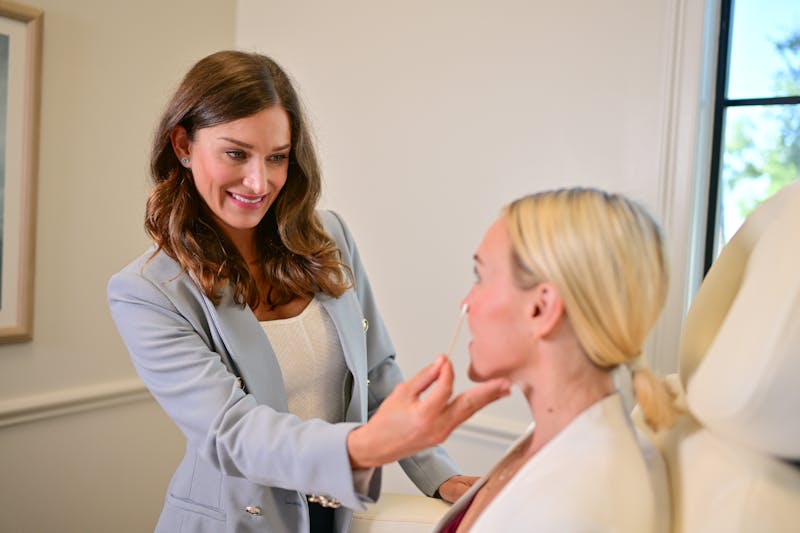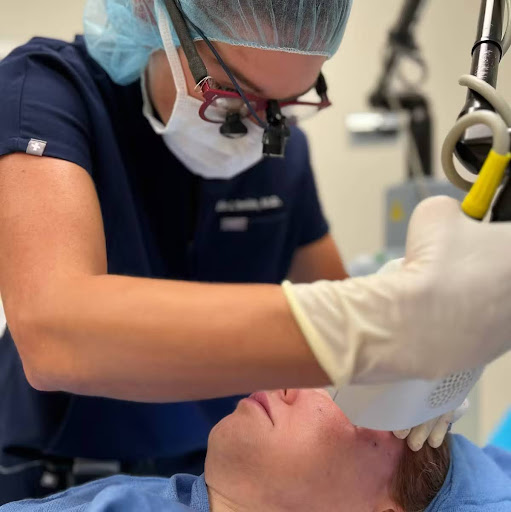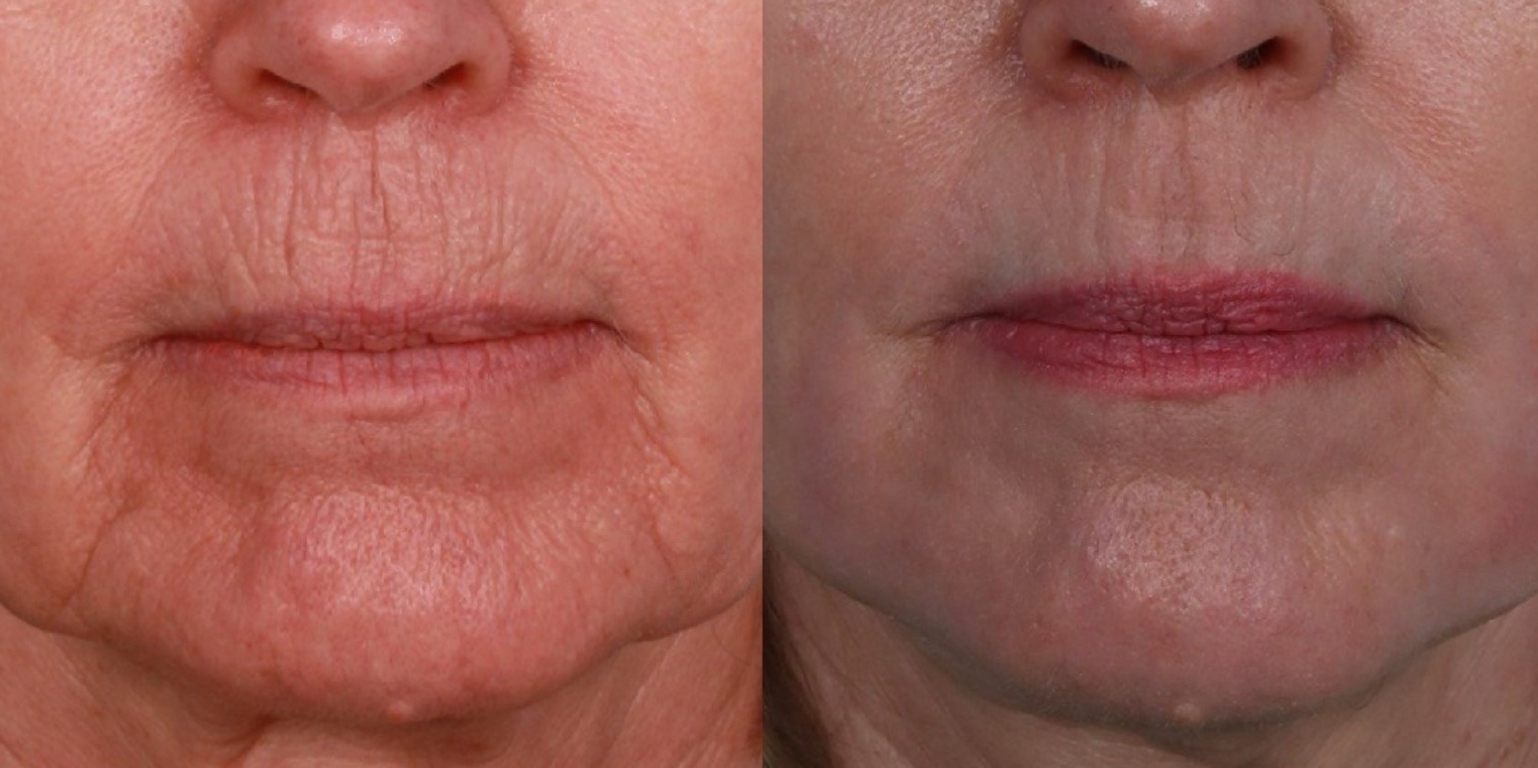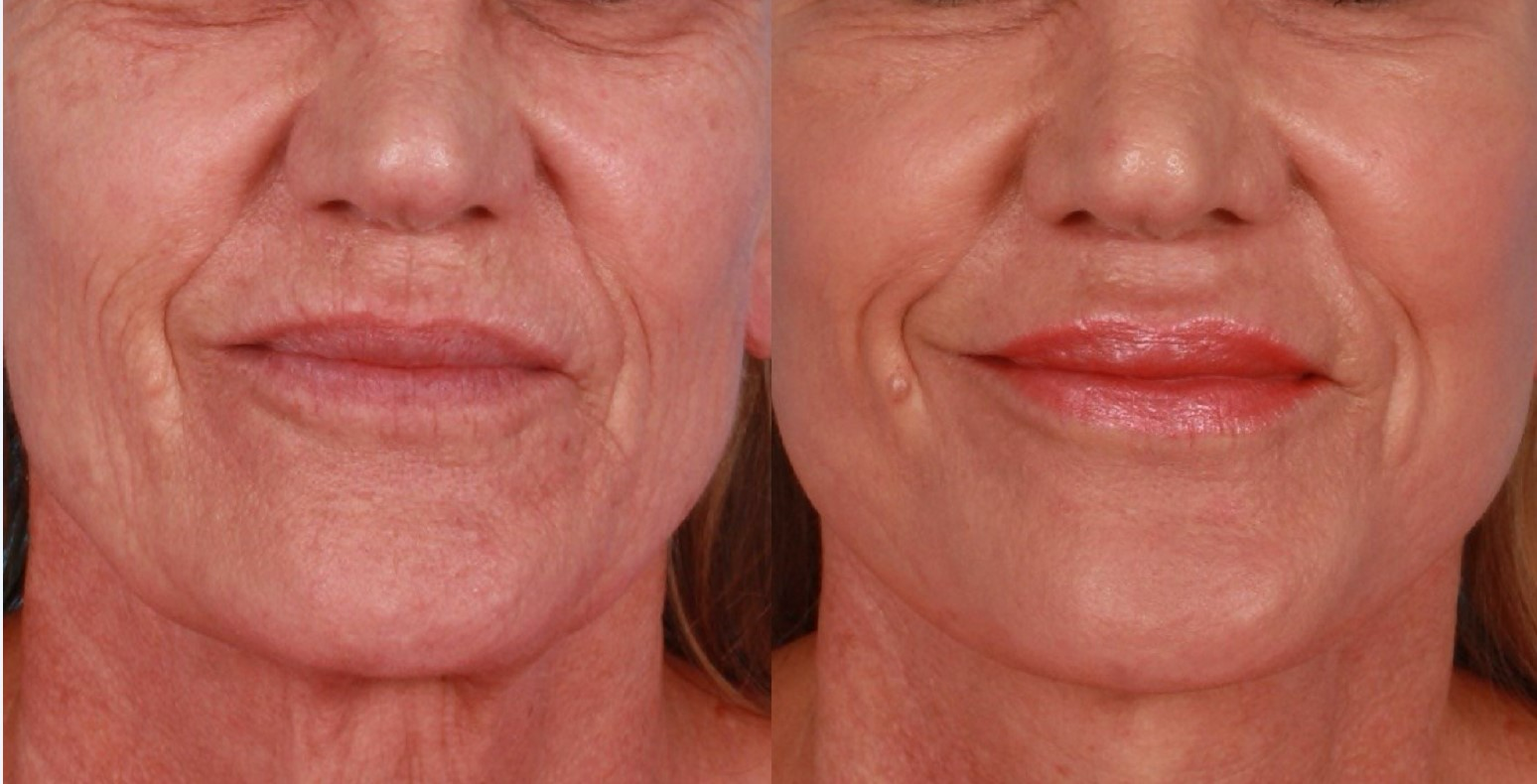

By Dr. Erin Smith
As a Double Board Certified Facial Plastic Surgeon at The Buckingham Center in Austin, Texas, I often get asked about the differences between CO2 laser (also known as fractional laser) and Morpheus8 (RF microneedling). Both procedures are popular for addressing skin concerns and promoting a more youthful appearance, but they work in very different ways. Let's dive into the details.
What's the Difference?
- CO2 Laser: This procedure uses targeted laser energy to both stimulate collagen/elastin production AND resurface the skin. It's particularly effective for treating deep wrinkles, fine lines, scars, pigment, and uneven skin tone.
- Morpheus8: This treatment uses radiofrequency (RF) energy and microneedling to stimulate collagen and elastin production. It does not resurface the skin. It's more used for tightening sagging skin, wrinkles, and textural irregularities.
Morpheus8 Positioning
Morpheus8 has gained significant popularity, thanks in part to endorsements from celebrities like the Kardashians. While it can be an effective treatment for many skin concerns, it's important to have realistic expectations. Morpheus8 typically requires multiple treatments to achieve optimal results. There is also some concern that it may advance facial aging signs by heating and then melting the facial fat pads.
Why CO2 Laser Requires a Facial Plastic Surgeon

Dr. Smith performing a facial CO2 laser resurfacing treatment with the patient awake under a light oral sedation for comfort.
CO2 laser penetrates deeper into the skin than some of the other in-office lasers, which makes it more effective but requires a skilled hand to achieve optimal results. A facial plastic surgeon has the expertise to:
- Customize the treatment: The physician can adjust the laser settings to target specific areas, to provide more energy to areas with deeper wrinkles or sun damage.
- Minimize complications: By performing the procedure with precision, a facial plastic surgeon can reduce the risk of side effects like scarring or uneven pigmentation.
- Ensure proper healing: Post-procedure care is crucial for optimal results, and a facial plastic surgeon can provide personalized guidance.
Areas and Skin Concerns
CO2 Laser:
- Deep wrinkles and fine lines
- Scars (acne, surgical, or injury)
- Age spots and sun damage
- Uneven skin tone
- Enlarged pores
- Thickened nasal skin
Morpheus8:
- Sagging skin on the face, neck, and chest (skin laxity)
- Wrinkles
- Textural irregularities
- Acne scars
CO2 laser resurfacing is hands down one of the best treatments we offer at The Buckingham Center because of how effective and predictable it is. It is the gold standard for treating deeper facial wrinkles or more advanced sun damage. It can be performed alone to give a dramatic skin rejuvenation and smooth very deep rhytids and pigment, or in combination with a facelift, neck lift, or blepharoplasty. I much prefer it over Morpheus8 because of the ability to provide an accurate depth of penetration. The laser will not go deeper than the skin. However, with Morpheus8, the treatment depth can vary based on the pressure of the handpiece. If the person administering the treatment pushes harder, the energy may be targeted below the dermis into the fat plane of the face, Morpheus8 can actually melt facial fat, causing worsening skin laxity and aged appearance. For this reason, I do not advocate anyone having Morpheus8 treatment to their face and would proceed with caution in the neck.
Downtime
- CO2 Laser: There is more significant downtime associated with CO2 laser than a standard in-office resurfacing laser. The skin will look raw and swollen for around 7-10 days. Once the skin smooths over, it will be bright pink and slowly fade over several weeks. One can apply a tinted sunscreen for coverage as early as 2 weeks. Makeup can be applied 3-6 weeks after, depending on your healing time. It takes 3 months to see the final result of the wrinkle improvement.
- Morpheus8: Morpheus8 has less downtime. Patients may experience some redness or swelling immediately after the procedure, but this usually subsides within a few days.
CO2 Laser vs. Morpheus8 Comparison
| Feature | CO2 Laser | Morpheus8 |
| Procedure Type | Deep Resurfacing laser | RF microneedling |
| Invasiveness | More invasive (resurfaces) | Minimally invasive (does not resurface) |
| Downtime | 2 weeks (~may be pink up to 6 weeks but can apply coverage at 2 weeks) | 2 weeks |
| Results | Optimal results usually take place from healing at the 3 month mark | Results start to appear around 3 months |
| Treatment Areas | Wrinkles, fine lines, scars, uneven skin tone | Sagging skin, wrinkles, textural irregularities |
| Ideal Candidates | Those seeking significant skin rejuvenation | Suitable for a wide range of skin concerns |
| Number of Treatments | Typically one | Multiple treatments may be required (usually 4 to see optimal results) |
| Pain Level | Mild | Moderate |
| Anesthesia | Topical + Nerve blocks +/- oral | Topical +/- oral |
| Cost | Average of $5K+ | Average of $2K+ |
| Performed by | Facial plastic surgeon | Dermatologist or registered nurse |
Before and Afters


Myths About CO2 Fractional Laser
As a facial plastic surgeon, I often hear patients repeating common myths about CO2 laser. Here are four of the most frequent misconceptions. Recently some news came to my attention of Molly Sims during an episode of Watch What Happens Live. I wanted to unpack some topics that were discussed and my clinical opinion regarding them:
View this post on Instagram
- Myth: CO2 will deplete your biome layer of your skin (according to the interview with Molly Sims). This is partially true but that is NOT the entire story. This effect is only temporary. Just like we have a gut microbiome, the skin also has a diverse microbiome and requires a healthy balance of good bacteria to maintain normal oil gland production and adequate skin hydration. When the skin microbiome is out of balance, it can cause dryness or excessive oil. Any acidic face wash, exfoliator, laser, peel, or other resurfacing treatment can temporarily alter the microbiome of your skin. However this is not permanent. Your body naturally wants to replace the lost bacteria with the same good bacteria. After a CO2 laser, your doctor will guide you on the correct skincare products to use. Once your skin has healed, we will recommend skincare products which have probiotic properties to promote a healthy skin microbiome. Your skin will get back to normal but will then be smoother and glowing!
- Myth: CO2 will cause permanent pigment issues in your skin. Any laser treatment can induce an inflammatory process which can cause pigment overproduction, aka post-inflammatory hyperpigmentation. This is more prevalent in darker skin toned individuals. Your doctor will follow you closely after your laser and has medicated creams that can prevent and treat this process. A harder problem to treat is hypopigmentation. Your doctor will follow safe laser settings to avoid over-treating and bleaching the skin. That is why it is important to go to a board certified plastic surgeon for this procedure.
- Myth: You cannot wear makeup after a CO2 laser. It will slide off of your face. This is not true. However, your doctor will definitely not want you to apply makeup in the first two weeks after a CO2 laser while your skin is still in the early phase of healing. Starting at 2 weeks you will be switched to a mineral makeup which provides nice coverage of the pink color while you continue to heal. After 4-6 weeks, you can return to your own makeup regimen.
- Myth: A CO2 is only for “old people” or deep wrinkles. The CO2 laser is used in all ages. Many people in their 20s and 30s use the CO2 to treat deep ice pick acne scars, surgical scars, or traumatic scars. It is often used in persons in their 30s and 40s to build collagen and improve fine lines and wrinkles, especially in the tear trough region. It is used at all ages for severe sun damage and pigment. It is the gold standard for any deep lines in the face such as smokers lines, which can be prevalent at any age.
Choosing the Right Treatment
The best treatment for you will depend on your specific goals and skin concerns. A consultation with a plastic surgeon will help you to formulate the best treatment plan and if CO2 laser can help you achieve your desired results. While we do not offer Morpheus, our skilled team of laser technicians can also tailor a laser treatment with less social downtime with our technologies that include: BBL, Moxi and Halo.



